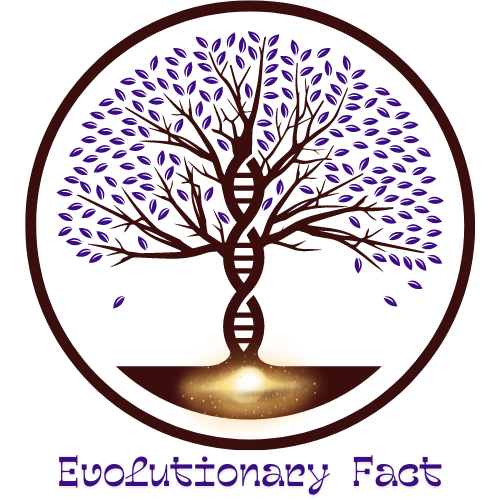What is the FOXP2 Gene?
FOXP2: The FOX2 gene, also known as FOXP2, is a key gene associated with human language disorders. While it is highly conserved across most mammals, humans differ from great apes with two functional amino acid substitutions. These evolutionary changes in the gene are hypothesized to have played a role in the emergence of speech and language in the human lineage. Research on variation in the FOX2 gene in great ape populations offers valuable insights into the evolution of communication skills.FOXP2 is a gene found in humans and many other animals. It provides instructions for making a protein that helps control the activity of other genes. This protein is called a transcription factor.
Why is FOXP2 Important?
Role in the Brain: The FOXP2 protein is crucial for the development of the brain, especially in areas involved in language, speech, and motor skills.
Speech and Language: FOXP2 is often called the “language gene” because it helps humans develop the ability to speak and understand language. Mutations in this gene can cause speech and language disorders.
Evolutionary Significance:
Humans vs. Other Species: The FOXP2 gene is very similar in humans and other animals, but humans have a few specific differences in this gene that are thought to be important for our unique ability to speak and use language.
Shared with Neanderthals: Neanderthals, our close evolutionary relatives, also had a similar version of the FOXP2 gene, suggesting they might have had some capacity for speech.
How Does FOXP2 Work?
Transcription Factor: As a transcription factor, the FOXP2 protein binds to DNA and helps turn other genes on or off. This is crucial during the development of the brain and the formation of neural circuits that enable speech and language.
Brain Areas: FOXP2 is active in areas like the basal ganglia (which help control movements) and Broca’s area (which is involved in producing speech).
What Happens if FOXP2 is Mutated?
Speech Disorders: Mutations in FOXP2 can lead to a condition called developmental verbal dyspraxia, where individuals have difficulty coordinating the movements needed for speech.
Other Effects: These mutations can also affect other brain functions, leading to additional challenges with learning and coordination.
Interesting Facts:
Research: Scientists study FOXP2 to learn more about how language and speech evolved in humans. It’s also studied to understand various speech and language disorders better.
Conservation: The gene is highly conserved, meaning it has remained relatively unchanged throughout evolution, indicating its important role in many animals.
The FOXP2 gene is known for its critical role in the development of speech and language in humans. When comparing the FOXP2 gene of modern humans (Homo sapiens) to that of earlier human species such as Homo erectus, it provides insights into the evolutionary changes that may have contributed to the development of these abilities. Although direct genetic sequences from Homo erectus are not available due to the limitations in ancient DNA preservation, we can infer some aspects by comparing Homo sapiens with Neanderthals and Denisovans, as well as considering evolutionary changes inferred from archaeological and fossil evidence.
Human (Homo sapiens) FOXP2
Function: The FOXP2 gene in humans encodes a transcription factor that is critical for proper development of speech and language. It is involved in neural development, especially in brain regions related to language and speech, such as the basal ganglia and Broca’s area.
Genetic Changes: Humans have two specific amino acid changes in the FOXP2 protein compared to chimpanzees (Thr303Asn and Asn325Ser). These changes are thought to be functionally significant for speech and language capabilities.
Neanderthal and Denisovan FOXP2
Similarity to Modern Humans: The FOXP2 gene in Neanderthals and Denisovans is virtually identical to that of modern humans, including the two key amino acid changes mentioned above. This suggests that the capacity for some form of language may have been present in these species as well.
Homo erectus and FOXP2
Indirect Evidence: Since we do not have direct genetic data from Homo erectus, our understanding is based on indirect evidence:
Archaeological Evidence: Tools and artifacts from Homo erectus sites show increasing complexity over time, suggesting advanced cognitive abilities.
Anatomical Evidence: Fossil evidence suggests that Homo erectus had a relatively modern vocal apparatus, which could support some form of vocal communication.
Evolutionary Implications:
FOXP2 Evolution: The FOXP2 gene is highly conserved across many species, indicating its crucial role in basic biological functions. The specific changes in the human FOXP2 gene are relatively recent in evolutionary terms and coincide with the period when modern humans were emerging.
Selection Pressure: The evolutionary changes in FOXP2 in the lineage leading to modern humans may have been driven by the advantages conferred by improved communication and social interaction.
Language Evolution: The similarities in FOXP2 between modern humans and archaic humans (Neanderthals and Denisovans) suggest that the genetic foundation for speech and language could have been present in a common ancestor, and thus potentially in Homo erectus to some extent.
Conclusion:
While we cannot compare the FOXP2 gene directly between Homo sapiens and Homo erectus due to the lack of genetic data from Homo erectus, comparisons with other archaic humans (Neanderthals and Denisovans) and indirect evidence provide a framework for understanding the evolution of this gene. The FOXP2 gene in modern humans is marked by specific changes that likely contributed to the development of complex speech and language, a defining characteristic of our species. This evolutionary pathway underscores the significant role of FOXP2 in human cognitive evolution and communication.

